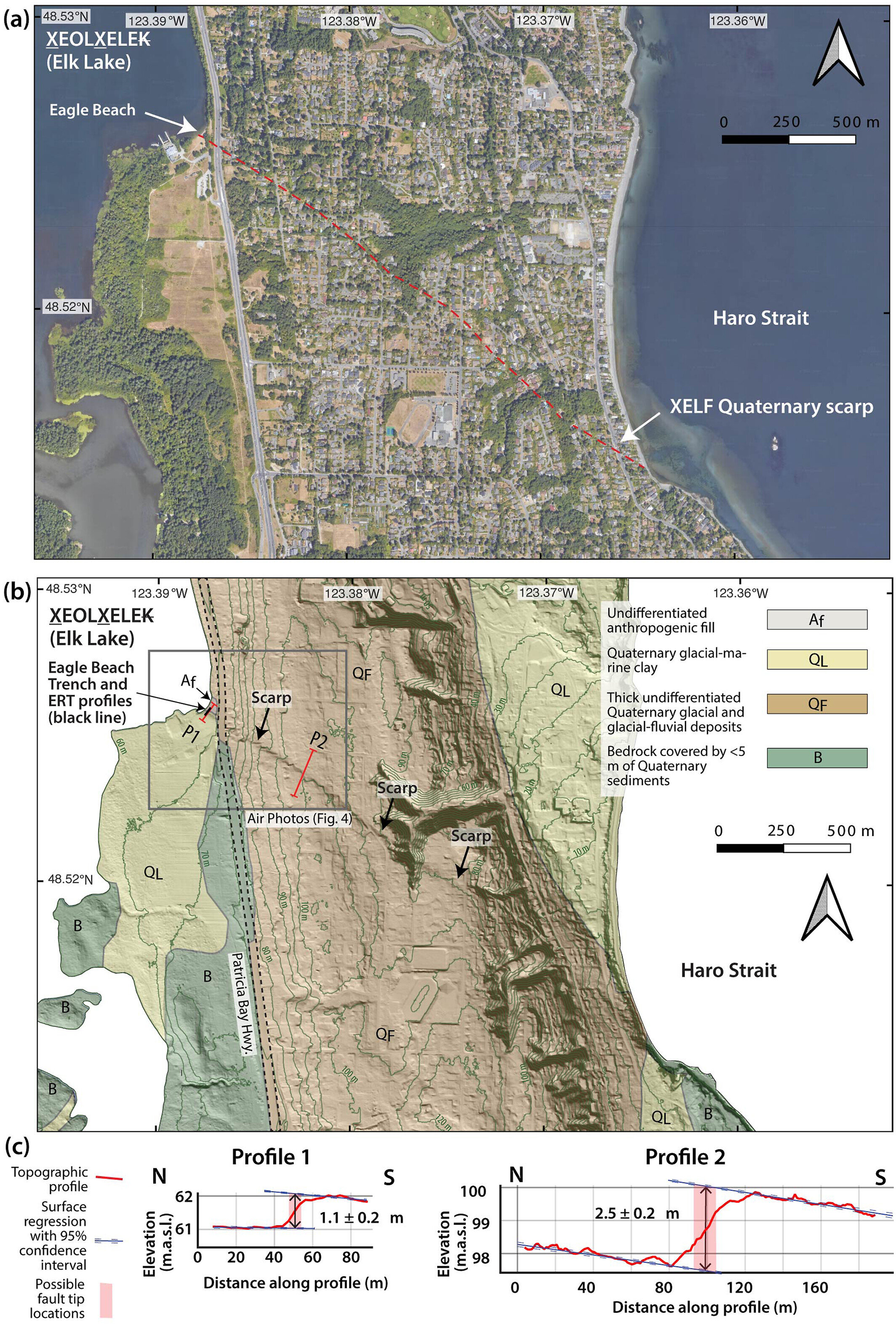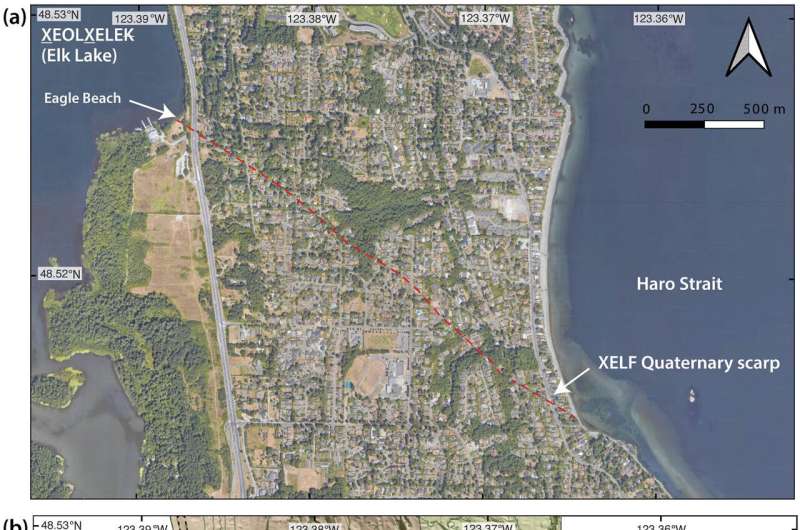Dogbreath
Well-Known Member
Never good news finding one of these ask people in Wellington they know all about it.

 phys.org
phys.org

A team of geologists, mineralogists and Earth and ocean scientists affiliated with institutions in Canada, the U.S. and France has discovered a 72-kilometer fault line on Canada's Vancouver Island. In their project, reported in the journal Tectonics, the group discovered the fault line after finding evidence of an earthquake on the Saanich Peninsula thousands of years ago.
Earth scientists have long suspected that parts of the Georgia Basin in Canada has a seismic history. But evidence of earthquakes has been difficult to find due to the forest cover in the region. In this new effort, the researchers conducted analysis of historical imagery, conducted remote sensing, hiked through forests and conducted shallow geophysical surveys to learn more about the possible seismic history of the Saanich Peninsula, which is situated on the southeastern part of Vancouver Island.
Part of their effort included digging trenches for clues, which led them to find minerals in rock that suggested magnetic field changes over time—an indication of rock formations that were broken or pulled apart and strong evidence of a fault line. In continuing to study such formations, they found further evidence of a fault line that ran for approximately 72 kilometers.
Additionally, study of the fault line showed it to be of the slip-dip kind, where blocks of rock move up and down against each other, rather than the side-to-side sliding that occurs in other fault lines. The research team named it the XEOLXELEK-Elk Lake Fault, and noted that it runs diagonally (northwest to southeast) along the Saanich Peninsula north of Victoria.
The researchers also note that should an earthquake occur at the site, it is likely that it would generate a tsunami because the fault line passes under the Saanich Inlet. Such a tsunami could strike places in Canada, such as Victoria and Vancouver, and places in the U.S. such as Seattle, Bellingham, Olympia and Tacoma. They also note that it is impossible to tell how soon an earthquake might strike the region, but note that evidence they gathered suggested the last one was approximately 2,300 to 4,700 years ago and that it was likely between magnitude 6.1 and 7.6.

Discovery of 72-kilometer fault line on Canada's Vancouver Island
A team of geologists, mineralogists and Earth and ocean scientists affiliated with institutions in Canada, the U.S. and France has discovered a 72-kilometer fault line on Canada's Vancouver Island. In their project, reported in the journal Tectonics, the group discovered the fault line after...
Discovery of 72-kilometer fault line on Canada's Vancouver Island

A team of geologists, mineralogists and Earth and ocean scientists affiliated with institutions in Canada, the U.S. and France has discovered a 72-kilometer fault line on Canada's Vancouver Island. In their project, reported in the journal Tectonics, the group discovered the fault line after finding evidence of an earthquake on the Saanich Peninsula thousands of years ago.
Earth scientists have long suspected that parts of the Georgia Basin in Canada has a seismic history. But evidence of earthquakes has been difficult to find due to the forest cover in the region. In this new effort, the researchers conducted analysis of historical imagery, conducted remote sensing, hiked through forests and conducted shallow geophysical surveys to learn more about the possible seismic history of the Saanich Peninsula, which is situated on the southeastern part of Vancouver Island.
Part of their effort included digging trenches for clues, which led them to find minerals in rock that suggested magnetic field changes over time—an indication of rock formations that were broken or pulled apart and strong evidence of a fault line. In continuing to study such formations, they found further evidence of a fault line that ran for approximately 72 kilometers.
Additionally, study of the fault line showed it to be of the slip-dip kind, where blocks of rock move up and down against each other, rather than the side-to-side sliding that occurs in other fault lines. The research team named it the XEOLXELEK-Elk Lake Fault, and noted that it runs diagonally (northwest to southeast) along the Saanich Peninsula north of Victoria.
The researchers also note that should an earthquake occur at the site, it is likely that it would generate a tsunami because the fault line passes under the Saanich Inlet. Such a tsunami could strike places in Canada, such as Victoria and Vancouver, and places in the U.S. such as Seattle, Bellingham, Olympia and Tacoma. They also note that it is impossible to tell how soon an earthquake might strike the region, but note that evidence they gathered suggested the last one was approximately 2,300 to 4,700 years ago and that it was likely between magnitude 6.1 and 7.6.
